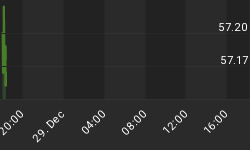"The deficit country is absorbing more, taking consumption and investment together, than its own production; in this sense, it is drawing upon savings made abroad. Whether this is a good bargain or not depends upon the nature of the use to which the funds are put. If they merely permit an excess of consumption over production, the economy is on the road to ruin. If they permit an excess of investment over home savings, the result depends on the nature of the investment."
- Joan Robinson, "Reconsideration of the Theory of Free Trade," Collected Economic Papers, Volume IV, 1973
Americas economic recovery and its likely strength have been and remain the central preoccupation in economics around the world.
In the consensus view, the U.S. economy will record in this year's second half its strongest pace of growth since the late 1990s. According to a monthly survey of 53 economic forecasters conducted by the Wall Street Journal Online, its seasonally adjusted annual growth rate during the current quarter will be 4.7% and 4% in the fourth quarter.
While a few economists have been warning that this recovery's actual pace may disappoint, our own view is that the U.S. economy's higher growth rate in the second quarter was totally deceptive. Focusing strictly on the hard economic data, like employment, personal income, production, business fixed investment and profits, we completely fail to see any recovery at all in the United States.
Ever since 2001, the United States has been running monetary and fiscal stimulus of unprecedented largess. In July, the government's tax cut and rebate checks turned an income gain of $19 billion into a $120 billion gain in disposable income.
In the bullish consensus view, the medicine is finally working. Above all the upward revision of the second-quarter real GDP growth rate from 2.4% to 3.1%, following 1.4% each in the two prior quarters, has caused virtual euphoria.
Knowing these are annualized growth rates is the first reason why we are still unable to see a sustained, let alone a self-sustaining, economic recovery in the United States. When American economists speak of 4% growth in the coming quarters, they really mean 1%, and that is a far cry from what used to rank as a cyclical recovery. Growth rates of postwar recoveries in the United States averaged 5.4% over the first two years after recession - and that needed very little monetary and fiscal stimulus, as against less than 3% growth currently.
The second reason for our disbelief is that U.S. GDP has been heavily bolstered by government spending. In the fourth quarter of 2002, it accounted for 24.5% of nominal GDP growth, in the first quarter of 2003 for 40.7% and in the second quarter for 38.2%.
A third reason is that the recovery completely fails to show in the current-dollar data. In these dollars in which all economic activity takes place, GDP grew 0.99%, after 0.94% in the first quarter, an acceleration hardly worth mentioning. But measured in chained dollars, it more than doubled from 0.35% to 0.775%. Taking the big boost from government spending into account, it was more slowdown than acceleration.
The fourth and most important negative point is that the trumpeted recovery in business fixed investment, in particular in high tech, is just another statistical mirage. In the second quarter of 2003, overall business fixed investment in structures, equipment and software, measured in current dollars, amounted to $1,119.9 billion, slightly down in comparison with $1,126.8 billion in the first quarter of 2002.
Measured in real terms, chained dollars, it was up $64 billion, or 0.5%.
I hardly need remind you that a true economic recovery essentially must come from a balanced rise in consumer spending and business investment spending. But what really happened to the two during the first half of 2003, being generally hailed as the start of the U.S. economy's final recovery?
Let us look at the changes in aggregate GDP. Measured in current dollars, it grew by $99.6 billion in the first quarter and by $105.5 billion in the second quarter, hardly an acceleration.
Looking at the demand components, growth of consumer spending, its biggest component, slowed between the two quarters from $87.1 billion to $83.1 billion. Nonresidential fixed investment dipped in the first quarter, but recovered in the second quarter to its earlier level. From first to second quarter, the growth of government spending slowed from $40.7 billion to $33.6 billion, and that of residential investment from $21 billion to $6 billion. Not one single GDP component rose. The sharply rising trade deficit subtracted $11.1 billion from GDP growth in the first quarter and $23.8 billion in the second.
But this dismal picture, measured in current dollars, radically changed for the better after the statisticians had treated the numbers with their price indexes. GDP growth, measured in chained dollars, surged from $33.8 billion to $73.5 billion. Growth in consumer spending, down in current dollars, went steeply up from $33 billion to $62.4 billion, and growth in government spending even shot up from $1.7 billion to $31.7 billion.
Yet by far the single biggest contributor to this sudden surge in real GDP growth from the first to second quarter came from the calculation of the price deflator for computers. Measured in current dollars, this investment inched up by $0.8 billion in the first quarter and by $6.3 billion in the second quarter, but the hedonic deflator boosted the two numbers in real terms to $15.3 billion and $38.4 billion. Hedonic pricing of computers in the first quarter accounted for 43% of real GDP growth and for 44% in the second.
The bullish consensus, flatly disregarding the overwhelming hedonic component, immediately hailed the sharp rise in computer investment as the rapid comeback of high-tech investment. Wall Street celebrated with the NASDAQ up 56% since March.
In its absence, nonresidential investment remained dead in the water across the board.
Warm regards,
















